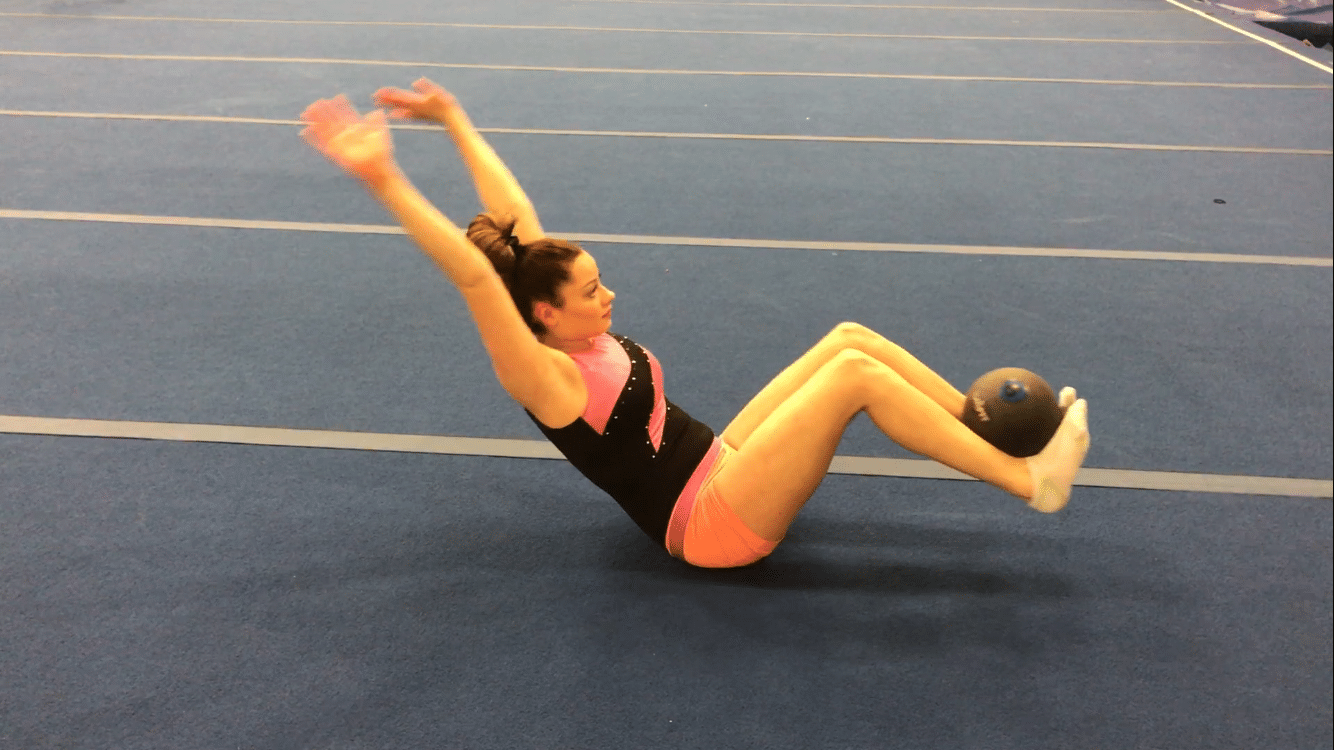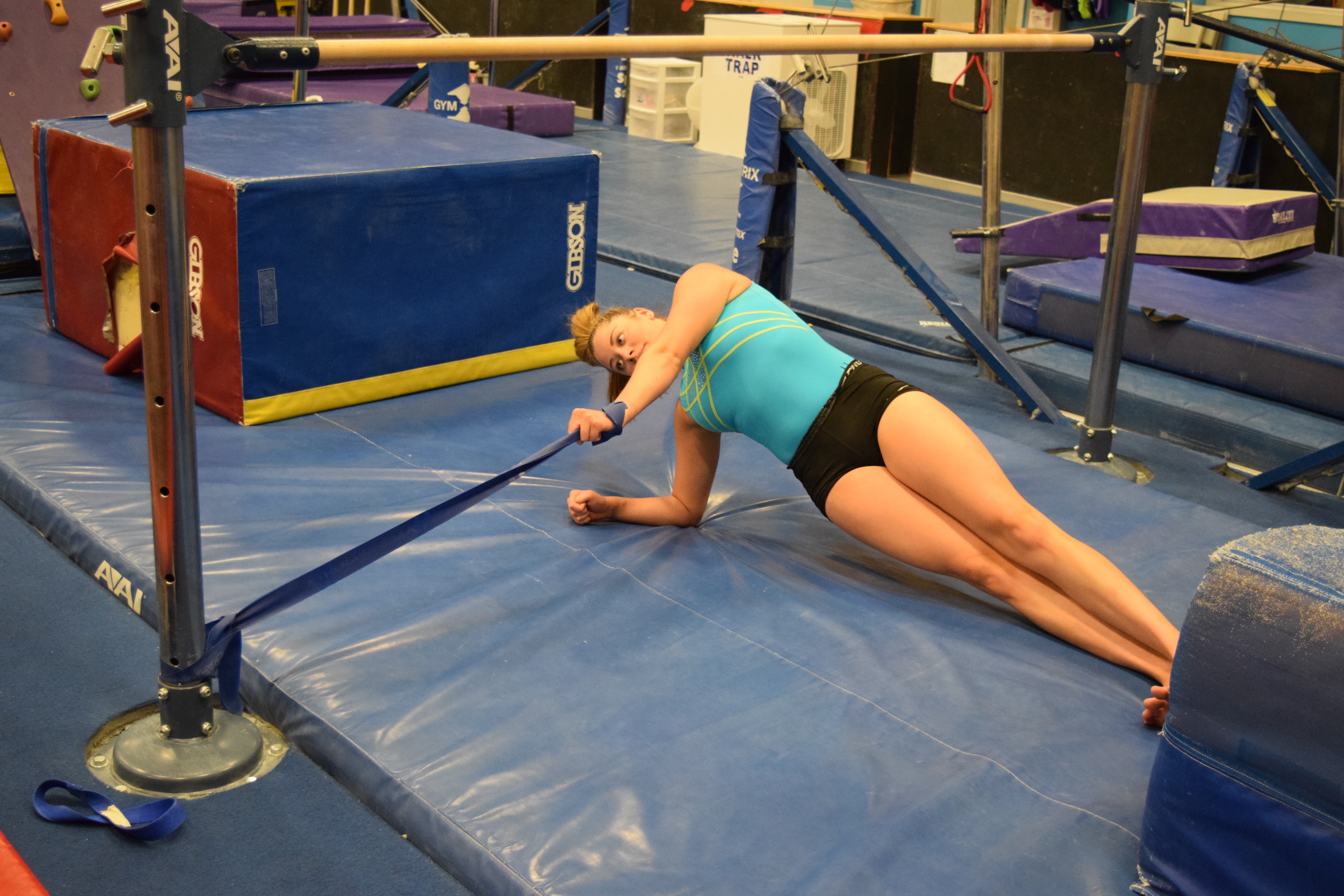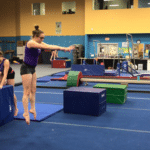Video Quick Tip! Medball V Up Passes
Today I wanted to share one of my favorite new core exercises that I have been using a lot. I originally saw a version of this from the strength coaches I work with at Champion, and tweaked it a little bit for our gymnastics team. Check out Medball V Ups
How To Perform This Exercise
This exercise is relatively straight forward. The athlete starts in a tuck hold position with the medball in their hands. They will slowly extend their arms overhead until the medball lightly taps the ground above their head, and hold for 1-2 seconds (cycle a full breath in and out). Then they will return to the starting tuck position, and transfer the medball to their feet. It’s important that they straddle a little bit and flex their toes for the ball to remain in place. They will extend out again with the ball now in their feet, again holding 1-2 seconds at the end range (cycle another full breath).
I usually program 3-4 sets of 5, with one ball tap overhead and leg extension being 1 repetition. I find it’s a fantastic super set for lower or upper body strength exercises.
Why I Like This Exercise
- It has both an upper body and lower body anti-extension focus. As the medball is lowered overhead, it helps the upper body work to prevent rib flaring. It also placed a lot of challenege on the core as the hands move out further. As the medball is placed in the feet and extended out, the same challenge occurs for the lower body. I think both of these aspects of core training are really important to gymnastics skills and many other sports / daily life activities
- It’s dynamic and requires constant adjustment. Although the flexed toes and legs being apart are not perfect gymnastics form, it creates the need for constant adjustment during the exercise. The medball is challenging to control and requires the gymnast pay close attention to their position. I’ve really moved away from static only core training, like long duration plank series. Although I do think these types of static holds are important for gymnastics specific drills (arch / hollow shapes, straddle L, etc). But when it comes to training the core for gymnastics skill performance, I think we really need to be focusing on more dynamic core strength that will transfer better train for skills.
- It’s easily scalable to all levels of athletes. I’m a huge fan of making sure gymnastics strength programs are individualized to the gymnast. We obviously would like everyone to move to higher level strength exercises with great form and quality, but the reality of the situation is that a one size fits all strength model will not work. Some athletes will need easier or harder versions of the exercise, or a separate regression/progression of the exercise. Without this approach, athletes likely will not get the training load and eventual adaptation we want. This exercise can be regressed by not extending the arms/legs so far overhead, or by using a lighter / no medball. It can be progressed by increasing the medball weight, or by adding some dynamic circles and holds at the end range of movement.
Give it a shot in your next training session, or try it with the athletes you work with!
Dave Tilley DPT, SCS




